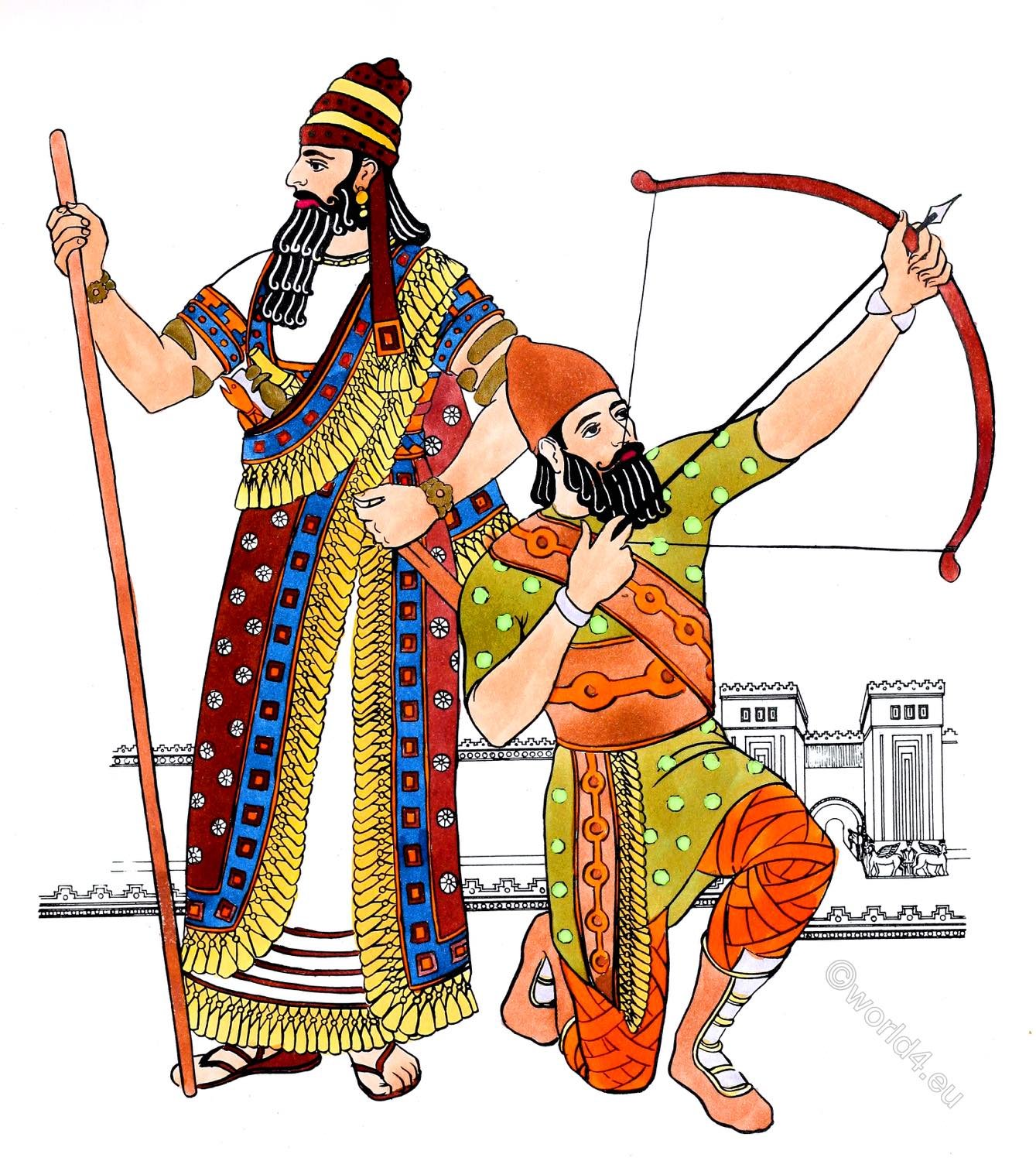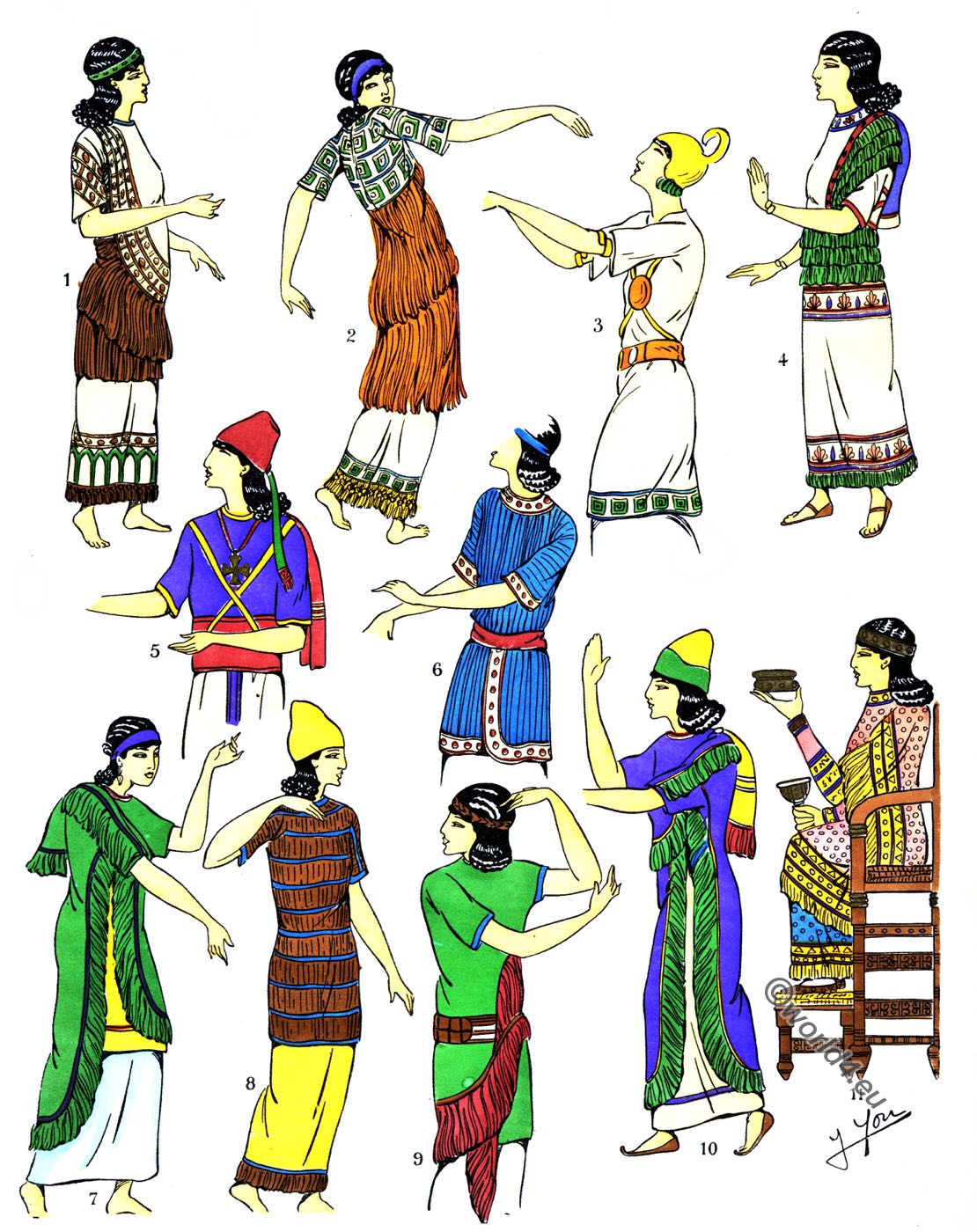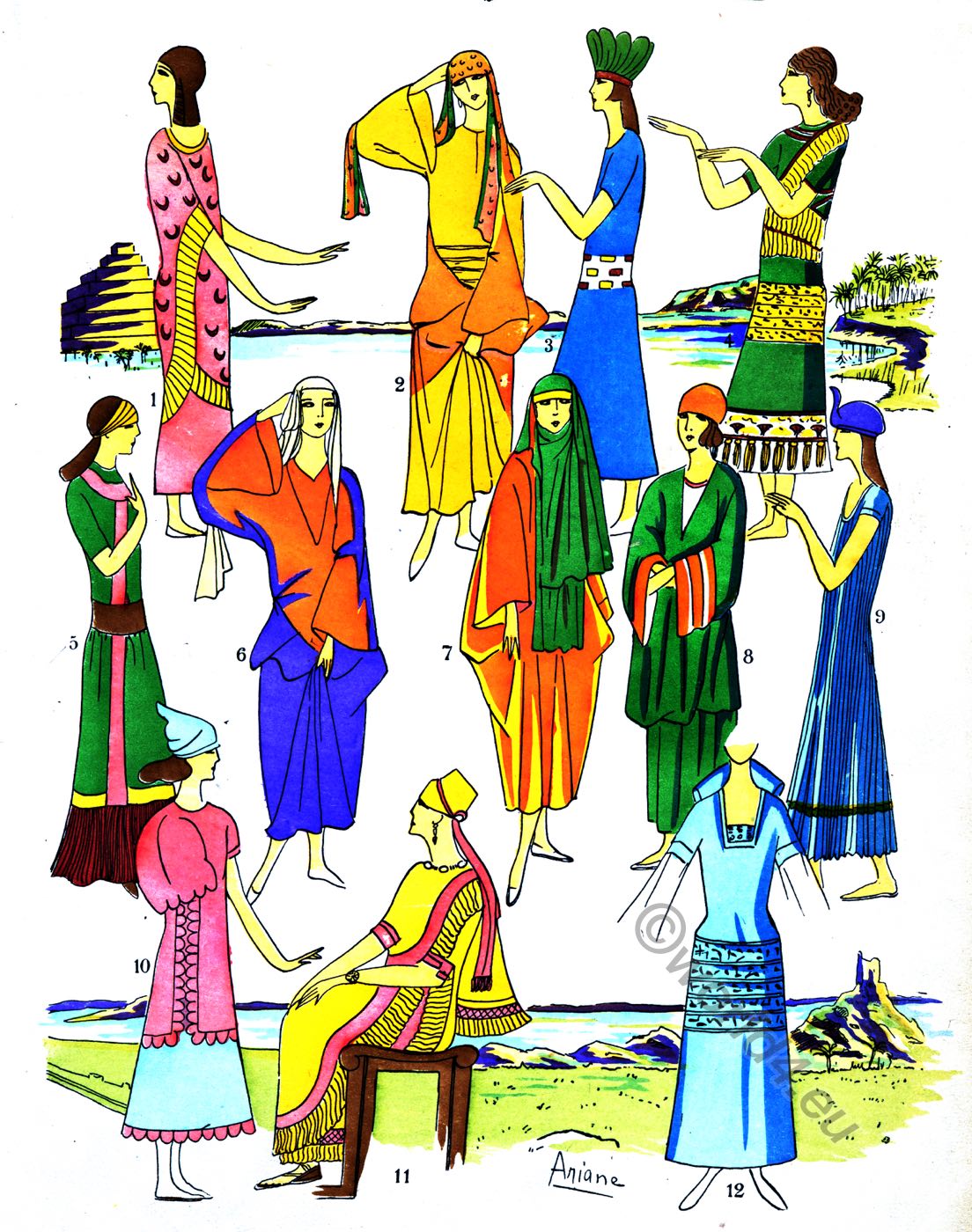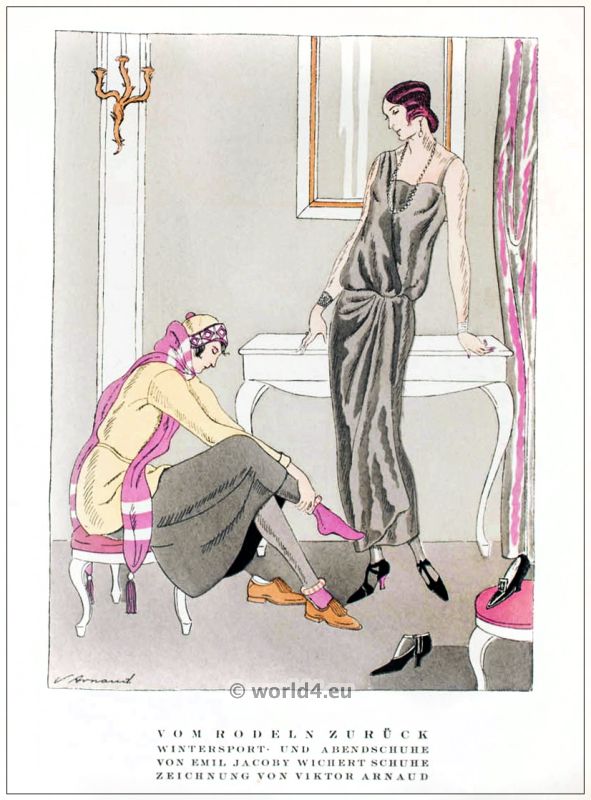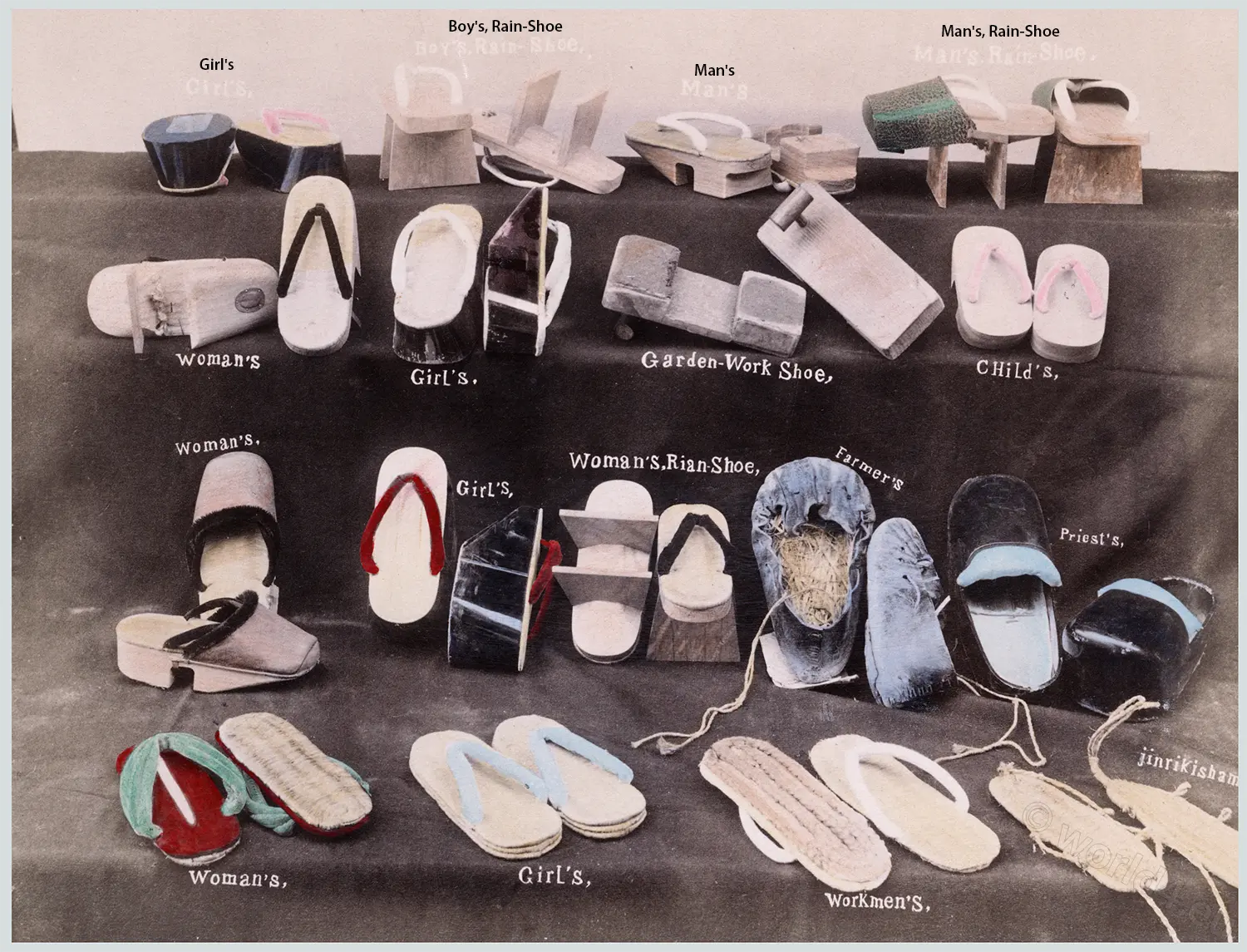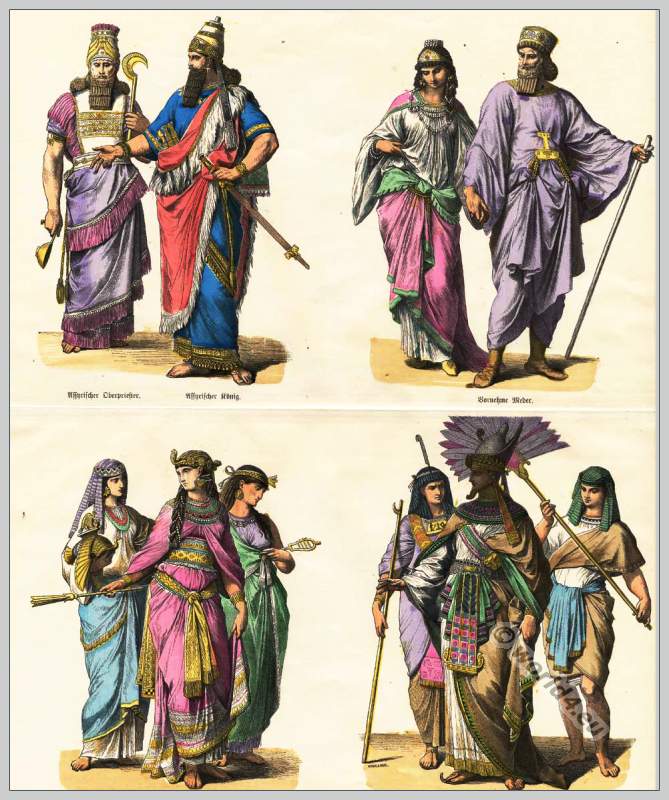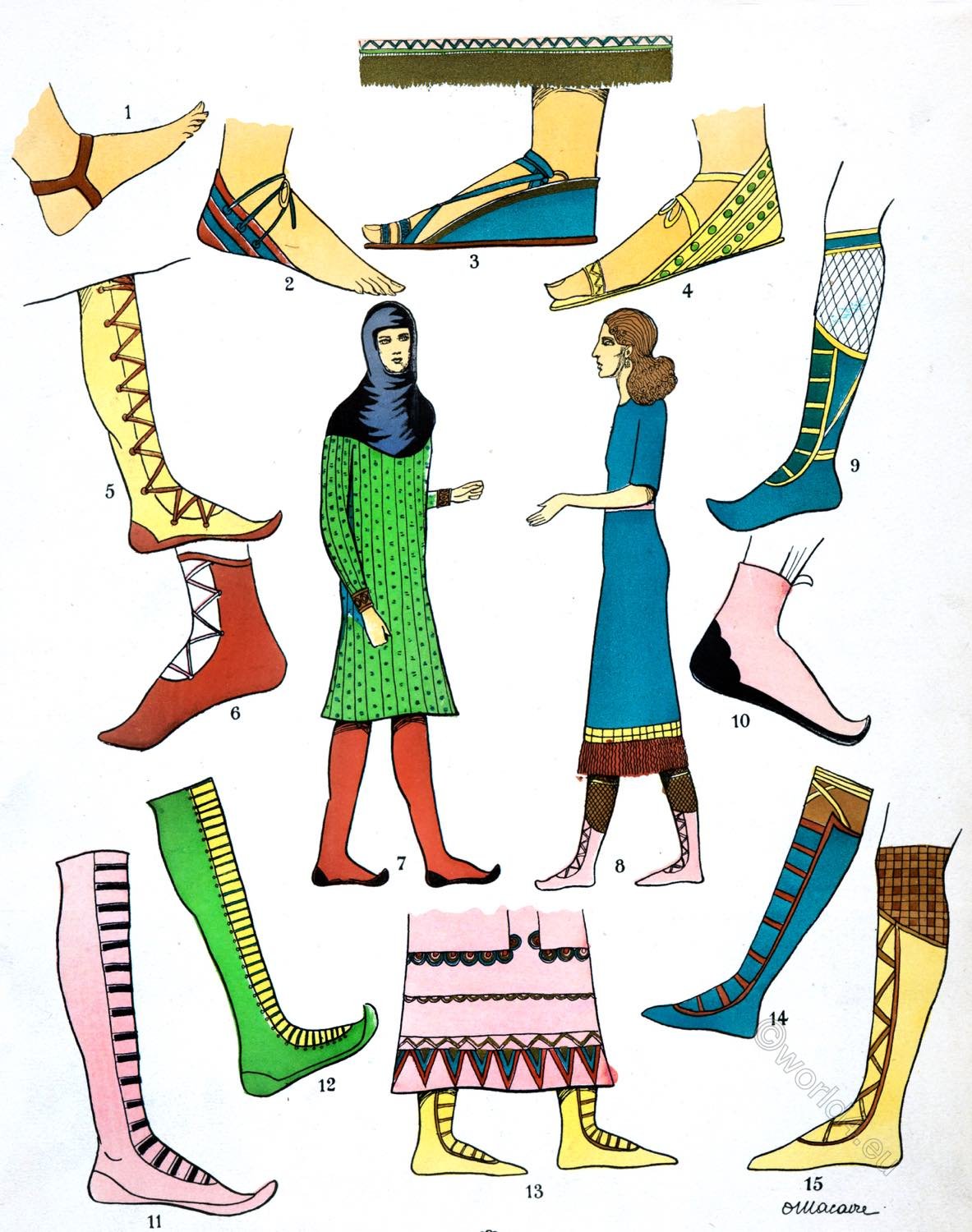
The Luxurious Assyrian Costumes.
Shoes, Sandals, Boots.
Part V. Assyrian Plate 9.
Fig. 1. Venetian red strap (from Paul-Émile Botta, designed by Eugène Flandin).
Fig. 2. Sandal. Heel striped Venetian red and Sevresblue. (Botta and Flandin, volume I, From a sculpture in Ninevah and a bas-relief in the Khorsabad palace.)
Fig. 3. Sandal. Close-fitting heel, Sevres-blue, gold galloon and ring. Sevres-blue straps. Venetian red sole.
Fig. 4. Sandal. Close-fitting heel and bright yellow strap, dotted with light green (After Victor Place).
Fig. 5. Light yellow high boot, Venetian red laces and soles.
Fig. 6. Venetian red shoe and laces (Botta and Flandin).
Fig. 7. Woman of Mascate in Susiana. Black ash-green tunic, with Sevres blue design hood, Venetian-red and black boots. (From documents found in the Susa Acropolis, Dieulafoy’s excavations.)
Fig. 8. Slave’s dress. Long Sevres-blue smock, Malmaison pink belt, bright yellow galloon at the bottom. Venetian-red fringes. Malmaison pink half-boots, black laces, brown and yellow leggings. (From excavations in Ninevah, by Victor Placet.)
Fig. 9. Light blue-green half-boot, yellow galloon and lace, white check legging, blue and yellow garter.
Fig. 10 Malmaison-pink shoe. Black sole.
Fig. 11. High Malmalson-pink boot. Black laces.
Fig. 12. Very ligh emerald-green boot. Green laces.
Fig. 13. Malmaison-pink gown-bottom. Embroideries in gold, Venetian red and emerald-green. Light yellow shoes, yellow laces.
Fig. 14. Sevres-blue half-boot, Venetian red laces and galloons. Brown check legging, light yellow lace and garter.
Fig. 15. Light yellow half-boot, check legging and brown laces.
Footwear.
FOOTWEAR. – The feet of the Assyrians were covered by sandals with uppers, embracing the heel, and leaving the instep and toes uncovered. The sandals with high uppers are painted alternatively in bands of red and blue, and at the front end is a ring through which the great toe passes in order to keep the sole in place, while it is also held by a cord passing over the foot and traversing alternatively two holes on the inside and three on the outside o.f the upper.
Stockings consisted of a species of open embroidery laced at the back of the foot and at the front of the leg.
Sandals with uppers are held by straps passing under the instep, but the position of the straps differs a great deal.
Half-boots often reach to the calf and are open in front and have transverse laces. Other half-boots are laced in front and reach to the kneecap, while they often have the toe turned up, with or without a heel. In Chaldea, the half-boots were of soft leather, laced, and without heels, and sandals also were worn.
Continuing
Discover more from World4 Costume Culture History
Subscribe to get the latest posts sent to your email.

